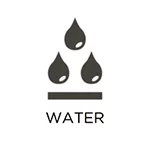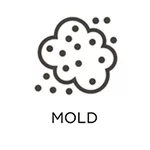RestorationMaster
Torrential downpours and flooding from local waterways are just two of the ways water can damage your home or business. Include faulty water pipes and defective appliances, and you can expect water damage within your property at some point.
Water damage may seem entirely harmless. However, water seeping into your residence or office space is tremendously hazardous to the safety of the occupants. Building materials, such as drywall, absorb liquid in any form. As a result, excessive water inside your property is likely to cause building structures to weaken or become a festering source for mold and bacteria growth. Property damage is a costly and devastating result.
Water Damage Cleanup in Rochester, NH
When you first notice water leaking into your home or business, contact a professional water damage restoration service right away. The experts at RestorationMaster service homes and businesses within the Rochester, NH area that have become contaminated with seeping water. Our water damage restoration technicians arrive within two to four hours of your call to tackle the intrusion of water and limit structural damage to your property.
Our specialists are extensively trained to remove excess moisture and water using state-of-the-art water damage restoration technology. A small, noticeable leak may house a larger, hidden infestation behind walls or in pipes. Our technicians are skilled in locating the sources of water damage to ensure your property is structurally safe and habitable. We are equipped to dry and restore properties of any size, from small residential settings to large business warehouses. Our service team also restores water-damaged items to their pre-damaged conditions.
For Flood and Water Damage Restoration services in Rochester, NH, contact RestorationMaster at (781) 604-1476.
RestorationMaster Water Damage Restoration Process
Our water damage restoration process is as follows:
- Thoroughly dry and dehumidify the space.
- Our technicians offer content cleaning and pack-out as necessary.
- Restoration of structures, furnishings, fine art and electronics; we even dry and recover documents.
- Clean water-drenched carpets and furniture.
- Removal of any mold growth that results from existing water damage.
Follow these important tips when water seepage invades your property
- Contact RestorationMaster immediately to limit the damage and the spread of mold within your property.
- Ventilate the space by propping open doors, closets, and drawers.
- Mop water-soaked spaces to dry them as much as possible.
- Remove only temporary floor coverings, like rugs. (Do not attempt to remove permanent flooring or carpeting.)
- Fold draperies over the rods to prevent standing water from saturating drapes.
- Blot dry furniture. Place foil underneath furniture legs to limit loss.
- Place all wall hangings, including photos and artwork, in a safe and dry space.
- Pack water-damaged books tightly on shelves to limit the effects of warping. Our team restores books using a specialized water drying process.
Our technicians specify certain activities to avoid when your property is affected with water damage:
- Never enter a water-logged property unless the power is switched off.
- Never use electrical appliances when standing on a wet floor.
- Avoid using a vacuum cleaner to remove excess moisture.
- Do not uninstall water-soaked carpeting or flooring; leave this task to professionals.
- Do not clean up mold growth; attempting to do so will only scatter mold spores to other areas of your property.
Flood Cleanup
Rochester, NH, has faced several significant flood events over the years, reflecting its vulnerability to flood risks. Notably, the Great Flood of 1936 was a major disaster across New England, including Rochester, where heavy rain and melting snow led to widespread flooding. More recently, the remnants of Hurricane Irene in 2011 caused considerable damage, particularly in areas near the Cocheco River, resulting in property damage and road closures. The city also experienced substantial flooding in 2015 due to persistent heavy rain. Flood zones in Rochester, as designated by FEMA’s Flood Insurance Rate Maps, include areas close to the Cocheco River, which are especially prone to flooding. RestorationMaster provides emergency flood cleanup services for homes and commercial properties in Rochester, NH.
Contact Us 24/7 for Water Damage Repair in Rochester, NH

If your residence or business endures water damage of any scope, call RestorationMaster Our experienced technicians will respond to your call immediately in the Rochester, NH area. We understand that tiny water leaks can blow into mammoth proportions within hours.
We are available 24 hours a day in the event of emergencies. Call us at (781) 604-1476 for immediate flood or water damage restoration service and/or details.
Related Water Damage Restoration Services
Water Damage Cleanup in Cambridge, MA
Water Damage Restoration in Derry, NH
Water Damage Repair in Dover, NH
Flood Cleanup in Manchester, NH
Flood Restoration in Nashua, NH
Water Damage Restoration Company in Peabody, MA
Water Damage Cleanup and Restoration in Stoneham, MA
FAQs Related to Flood Damage
How long is the drying process for water damaged homes?
The drying process for water-damaged homes can vary widely depending on several factors, including the extent of the damage, the type of materials affected, the humidity levels, and the effectiveness of the drying equipment used. In general, the initial drying phase, which involves removing standing water and setting up drying equipment like fans and dehumidifiers, typically takes around 2 to 5 days. However, drying out saturated building materials such as drywall, wood, and insulation can take significantly longer, ranging from several days to several weeks.
How to prevent indoor flooding from storms?
To prevent indoor flooding from storms, here’s the list of things you need to do:
- Maintain Gutters and Downspouts
- Sump Pump Maintenance
- Foundation Sealing
- Landscaping
- Check Seals and Caulking
- Install Flood Sensors
- Elevate Utilities
How to fix water damaged drywall?
Our restoration experts have outlined a few steps for fixing a water-damaged drywall:
- Use a utility knife to cut out damaged drywall cleanly.
- Allow exposed area to thoroughly dry using fans or dehumidifiers.
- If mold is present, use a mold-killing solution and let dry completely.
- Patch damaged drywall with joint compound and a drywall patch.
- Smooth out joint compound and let dry completely before sanding.
- Prime the area, then paint to match the surrounding wall.
- Keep an eye on the repaired area for further damage or moisture.
Can I break my lease because of water damage?
If there’s water damage in your place, it might give you a way out of your lease, but it depends. How bad is the damage? Is it making your place unlivable? Check your lease to see if it mentions anything about this situation. In a lot of places, landlords have to keep their properties safe to live in, which means fixing water damage. If your landlord isn’t doing anything about it and it’s affecting your quality of life, you might have a case for breaking your lease.
More Information on Water Damage Restoration
How to know if water damage is fresh or old?
One essential part of dealing with water damage is figuring out whether it’s new or old. Knowing this helps you understand how severe the issue is and what actions to take. In this guide, we’ll discuss ways to tell the difference between fresh and old water damage, giving you the knowledge you need to address the problem effectively.
What does a winter freeze mean for your pipes?
With the arrival of winter comes a pressing concern for homeowners: the potential for frozen pipes. As temperatures plummet, the risk of pipes freezing increases, potentially leading to costly damage. In this blog, we’ll examine the impact of winter freezes on plumbing systems and provide actionable tips to prevent pipe-related issues during the colder months.
How to prevent water damage behind shower tiles?
Preventing water damage behind shower tiles is crucial for a strong bathroom and saving on repairs. Start by waterproofing properly before installing tiles, using top-notch materials and following instructions closely. Invest in quality tiles, grout, and sealants for better durability against moisture. Using a shower curtain or door, ensuring good ventilation, and fixing plumbing leaks quickly also help maintain a safe shower space.




